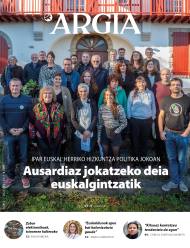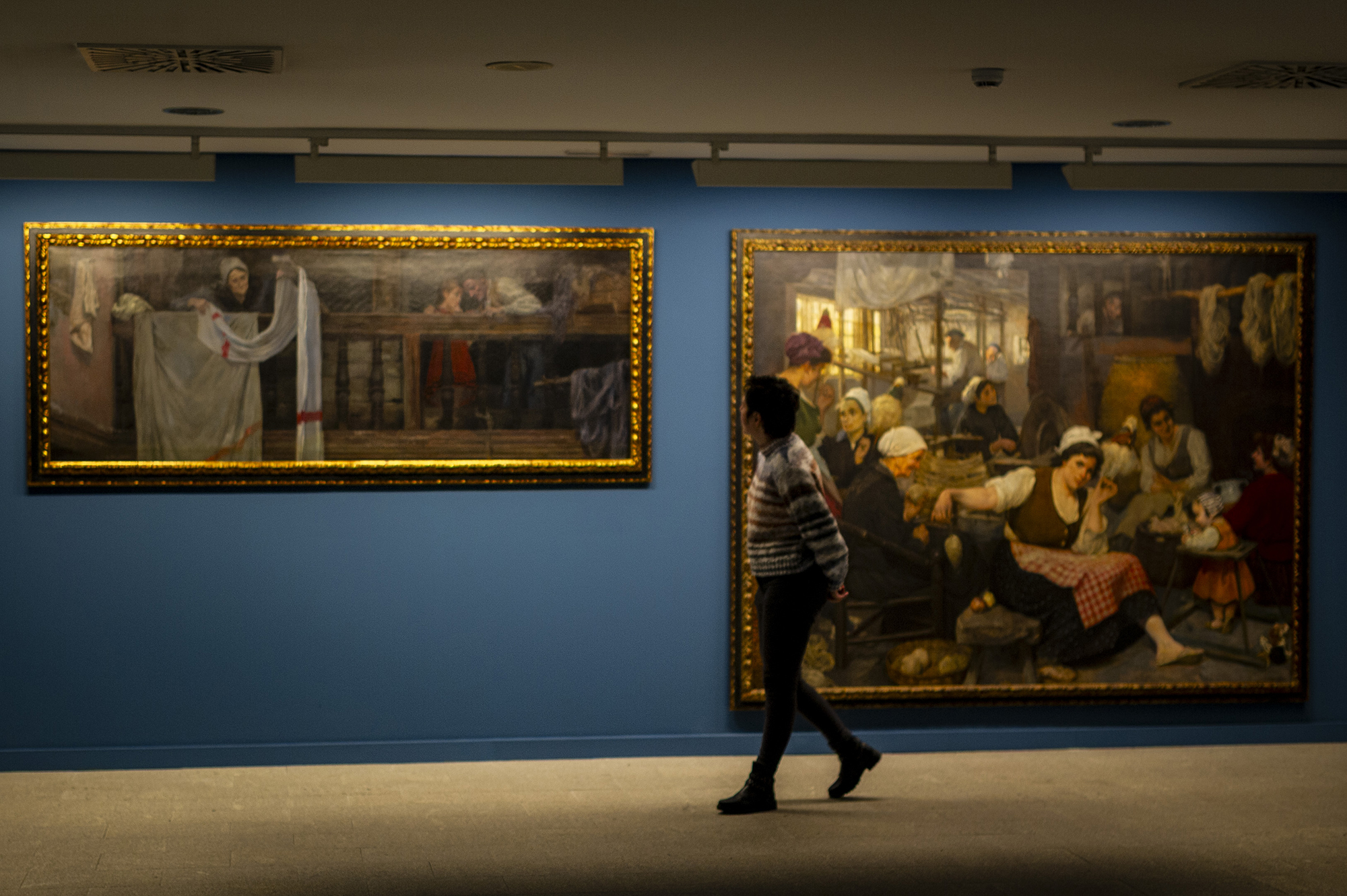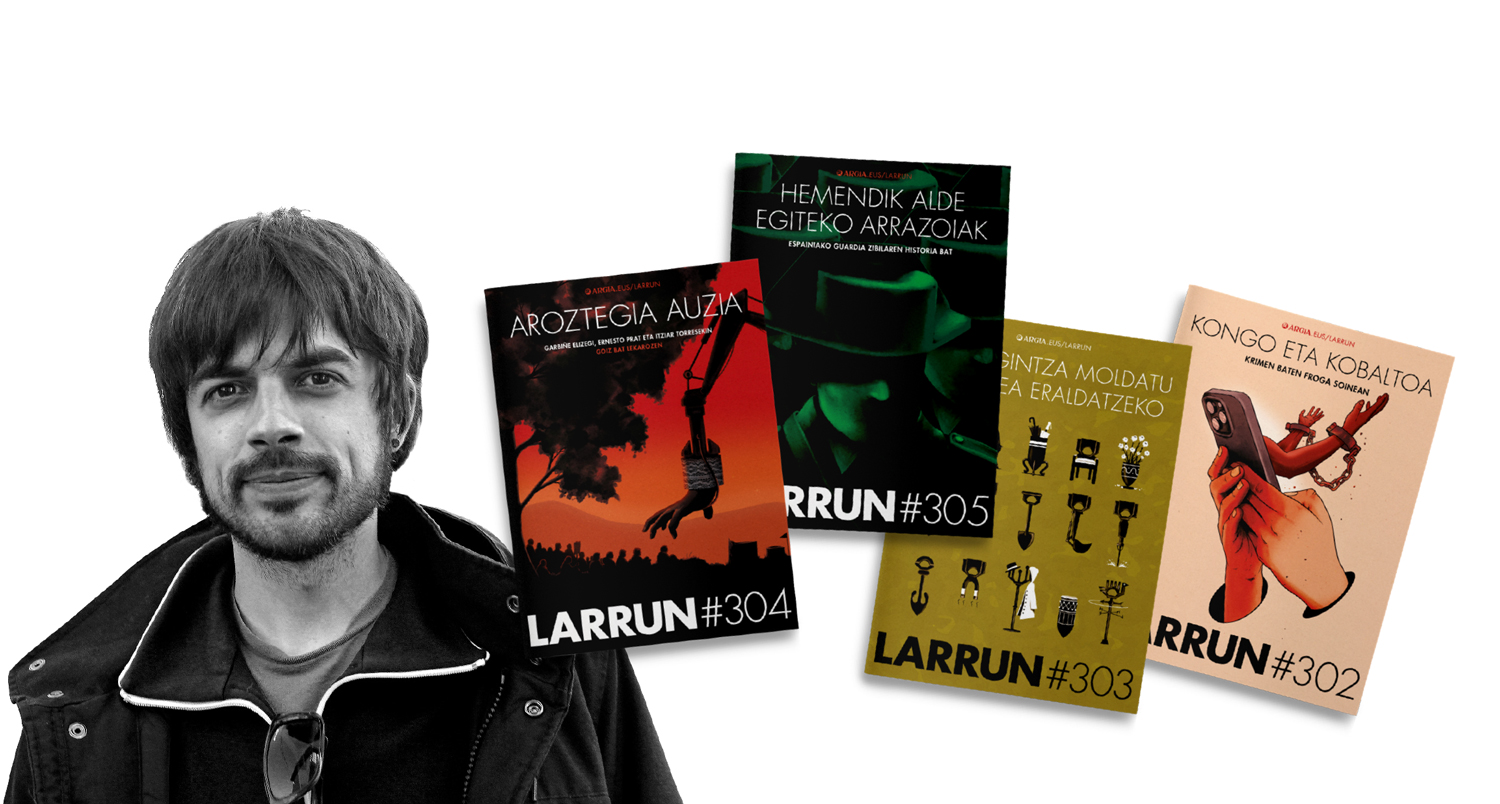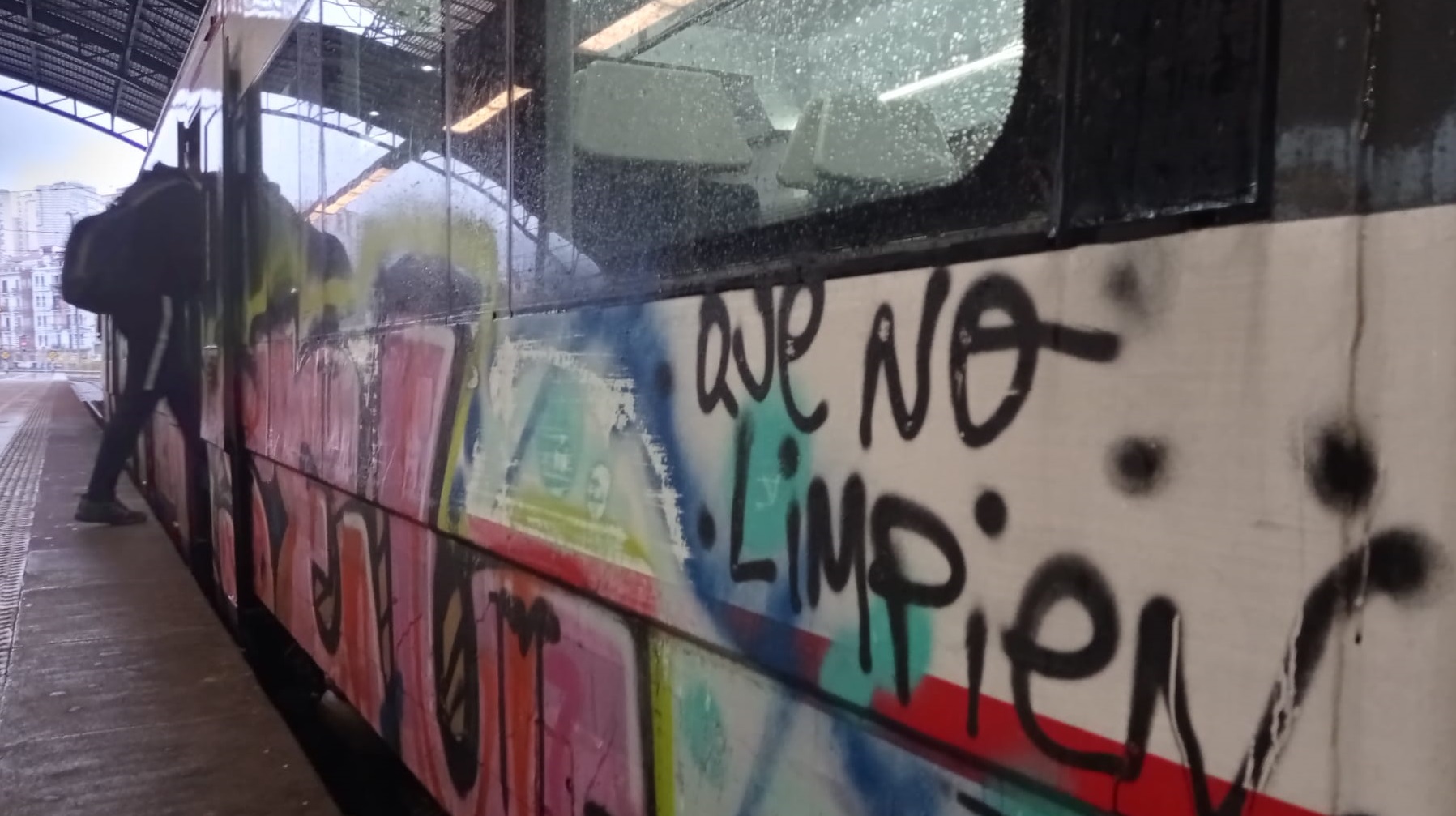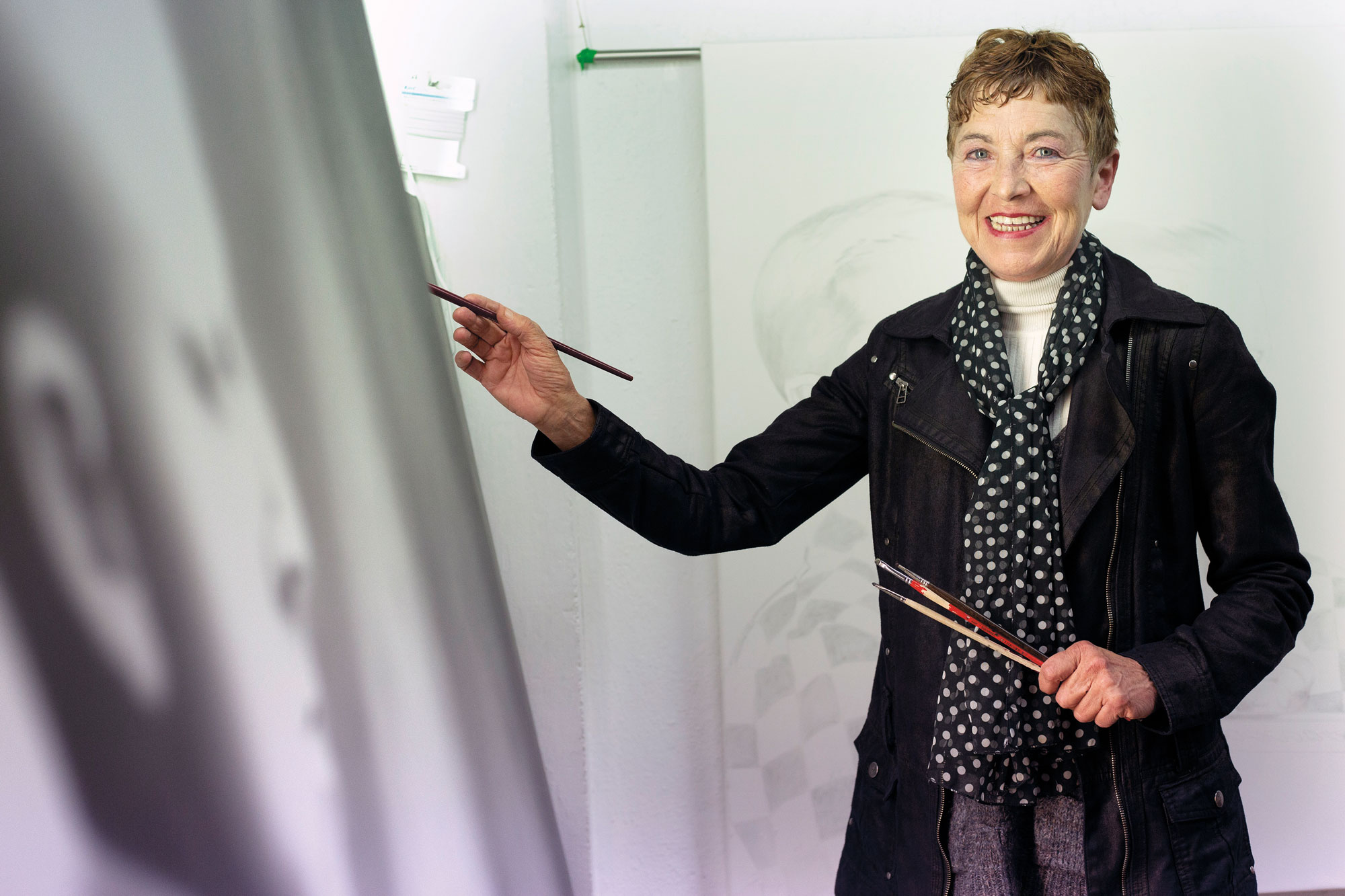“My bond with my father has always been held in the air”
- Natalia López (Bogotá, Colombia, 1978) analyzes the influence of migration processes on immigrants. To do this he has guided a healing process of three sessions and has collected the experience in the exhibition I send you all my love through the air. He has created in collaboration with immigrants residing in Huarte, Burlada and Villava (Navarra). The exhibition is open until January 14 at the San Andrés de Villava mill. The project is part of the Idensitat project in Barcelona and an artistic stay of the Huarte Centro de Arte Contemporáneo Foundation.
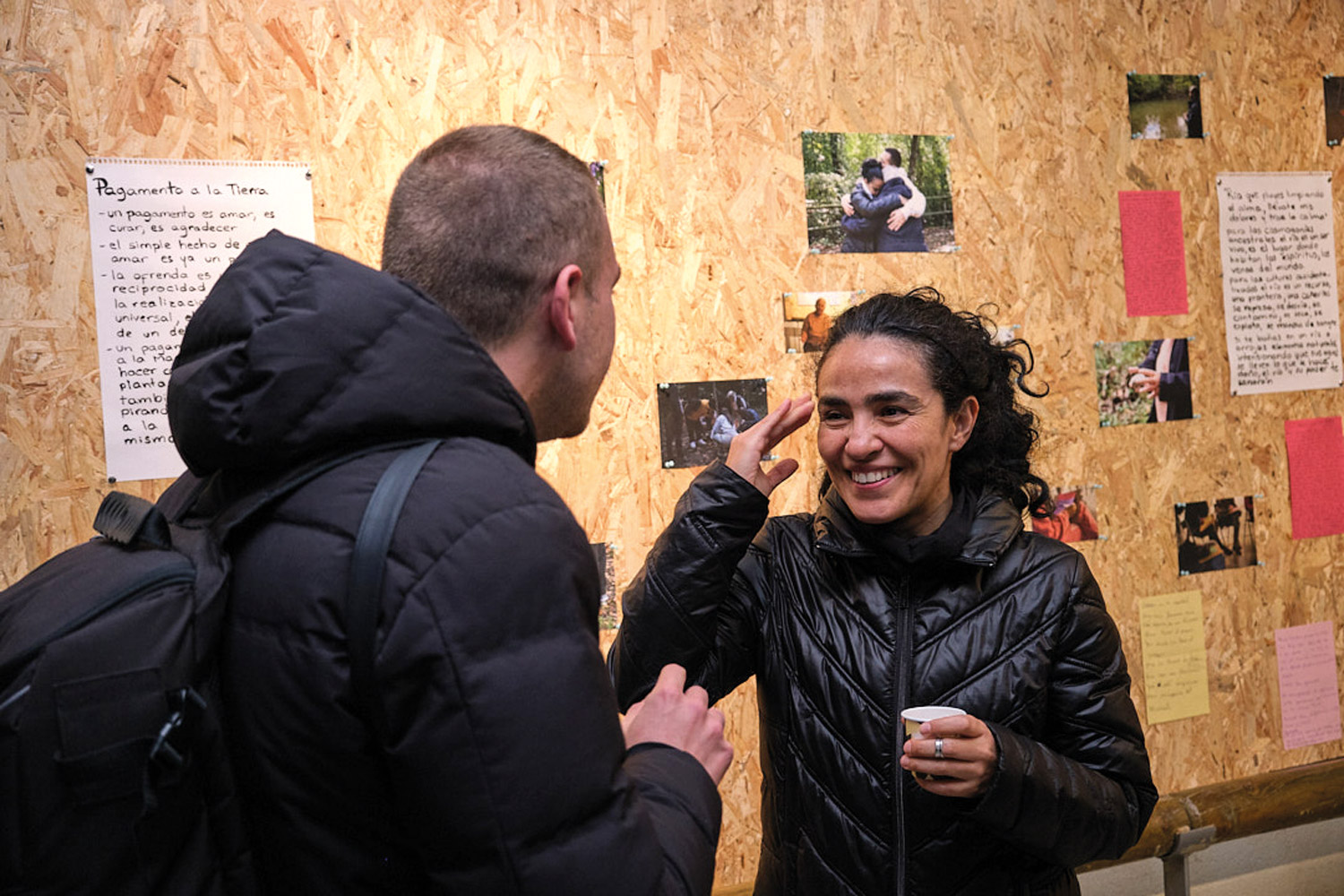
“Aita artista denez, txikitatik sortu dit interesa arteak. Umetan eskuekin gauzak egiten aritzen nintzen; adibidez, eskulturak egiten nituen, eta marraztu eta margotu. Hala ere, niretzat garrantzitsuena da artea sistemari aurre egiteko erresistentzia tresna bat dela. Uste dut, arteari esker, sistemarekin oso egoskorra naizela. Horregatik, zaila izan arren, artearen bidetik jarraitu nahi dut. Hala ere, Latinoamerikan oso gutxi babesten denez, oso erraza da amore ematea”.
The air is very visible in your work, how do you understand the air?
I have worked many times with elements of nature, but always from an environmental point of view. In this project, I found a political meaning. Air allows you to send or express many things, like love and pain. The air is everywhere in the world. Moreover, since it has no limits, it is a political element of resistance. In this project, rather than focusing on the environment, I focused on the political level and afectivo.Una the premise for creating work
was to work the air. Is it easier to start from a premise or can it be limiting?
In my case, it was a reason to participate in the project. My father is an immigrant and for economic and political reasons he did not see twelve years. A friend saw the call and thought it could be very appropriate for me, because I've worked many times with the air. When I saw the call, I thought it might have been a good idea to be with my father. I immediately started thinking about the influence of air on my relationship with my father.
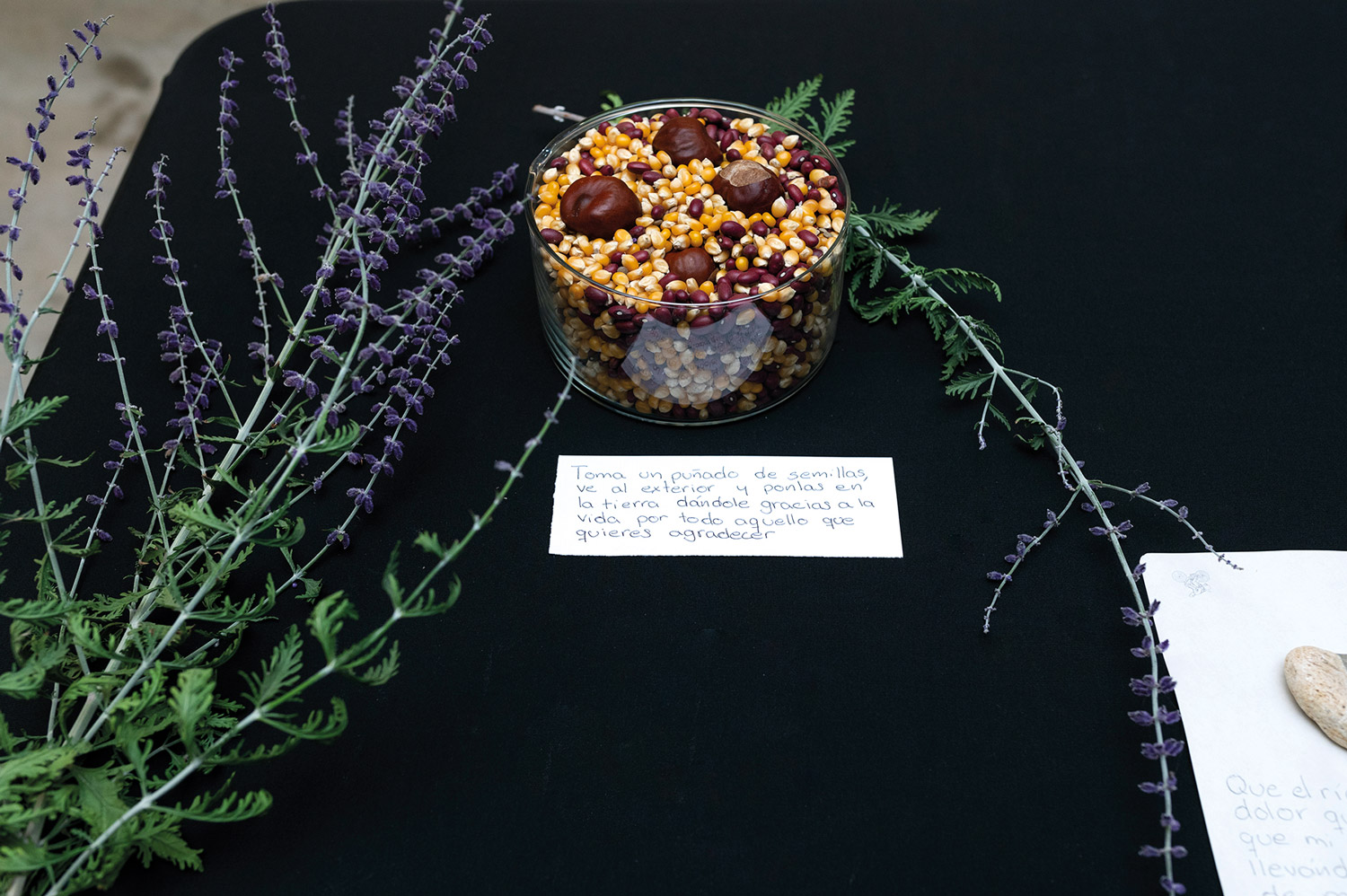
What influence has it had?
For 35 years, my father and I have been connected through letters, calls and emails, and we need air to use them. So I wanted to focus on the air that connected us. He's kept me connected to my father, because my bond with my father has always been held in the air.
So has your work process focused on the environment and relationships of immigrants?
I wanted to work with immigrants because I wanted to learn what my father lived and how he lived far from each other. As well as being a project to complement my pain, I wanted to create a space for immigrants, for them to express the pain and love for the distant.
For this, they made affective and poetic meetings, how did they look?
I'm researching ancient cultures in Colombia. In indigenous cultures, healing processes consist of three phases: gratitude, cleanliness and enjoyment. So we circled for the first phase and created a space to talk. The goal was to create a space of trust to talk about love or pain, but from the heart, that is, without attacking, judging or criticizing anyone, and listening. Then we did a rite of thanks. To do so, we plant seeds and reflect on how good it surrounds us.
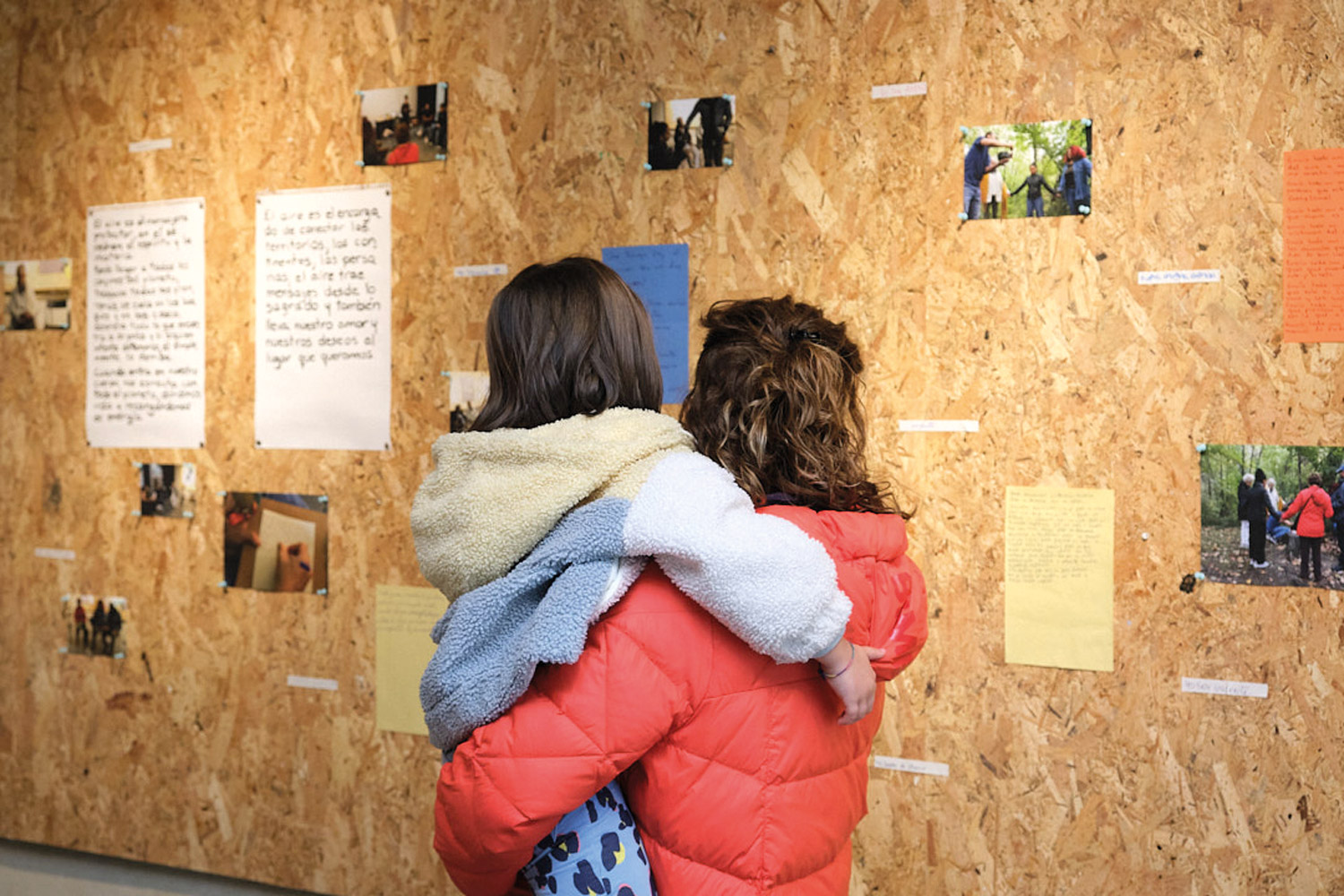
The
second relates to water. What did they do?
We made a circle and how writing is easier than saying, we wrote what we felt. The goal was to show with the role of sadness, anger and other emotions. Then I proposed to say aloud. We finally wrote it in a few stones and threw it into the river. Indigenous people think it helps clean up the waters, and I trust it.
How was the last one?
I call it sweet ritual. We circled and started writing on paper. Later, it was possible to share what was written on paper orally. Finally, we release the seeds that spread through the wind. Most wrote about war and its distant relatives.
“I wanted to create a space for immigrants, for them to express the pain and love for the distant”
Most of them didn't know each other, was it difficult to create a climate of trust?
I thought it was going to be harder. I found the love and friendship we have created for three days incredible. Despite belonging to different religions, countries, cultures, ages and thoughts, the fact that they have done so among equals has generated trust and friendship.
What conclusions have you drawn?
We've highlighted that we keep a lot of things and we don't give space to emotions. We don't take time to express love, to say what hurts us and to thank them. As we don't say what we're feeling, emotions are relegated. So we've seen that it's very important to create spaces for expression. In addition, creating spaces is easier than you think.
Eskultura grekoerromatarrek bere garaian zuten itxurak ez du zerikusirik gaurkoarekin. Erabilitako materiala ez zuten bistan uzten. Orain badakigu kolore biziz margotzen zituztela eta jantziak eta apaingarriak ere eransten zizkietela. Bada, Cecilie Brøns Harvard... [+]
Behin batean, gazterik, gidoi nagusia betetzea egokitu zitzaion. Elbira Zipitriaren ikasle izanak, ikastolen mugimendu berriarekin bat egin zuen. Irakasle izan zen artisau baino lehen. Gero, eskulturgile. Egun, musika jotzen du, bere gogoz eta bere buruarentzat. Eta beti, eta 35... [+]
This text comes two years later, but the calamities of drunks are like this. A surprising surprise happened in San Fermín Txikito: I met Maite Ciganda Azcarate, an art restorer and friend of a friend. That night he told me that he had been arranging two figures that could be... [+]
On Monday afternoon, I had already planned two documentaries carried out in the Basque Country. I am not particularly fond of documentaries, but Zinemaldia is often a good opportunity to set aside habits and traditions. I decided on the Pello Gutierrez Peñalba Replica a week... [+]









